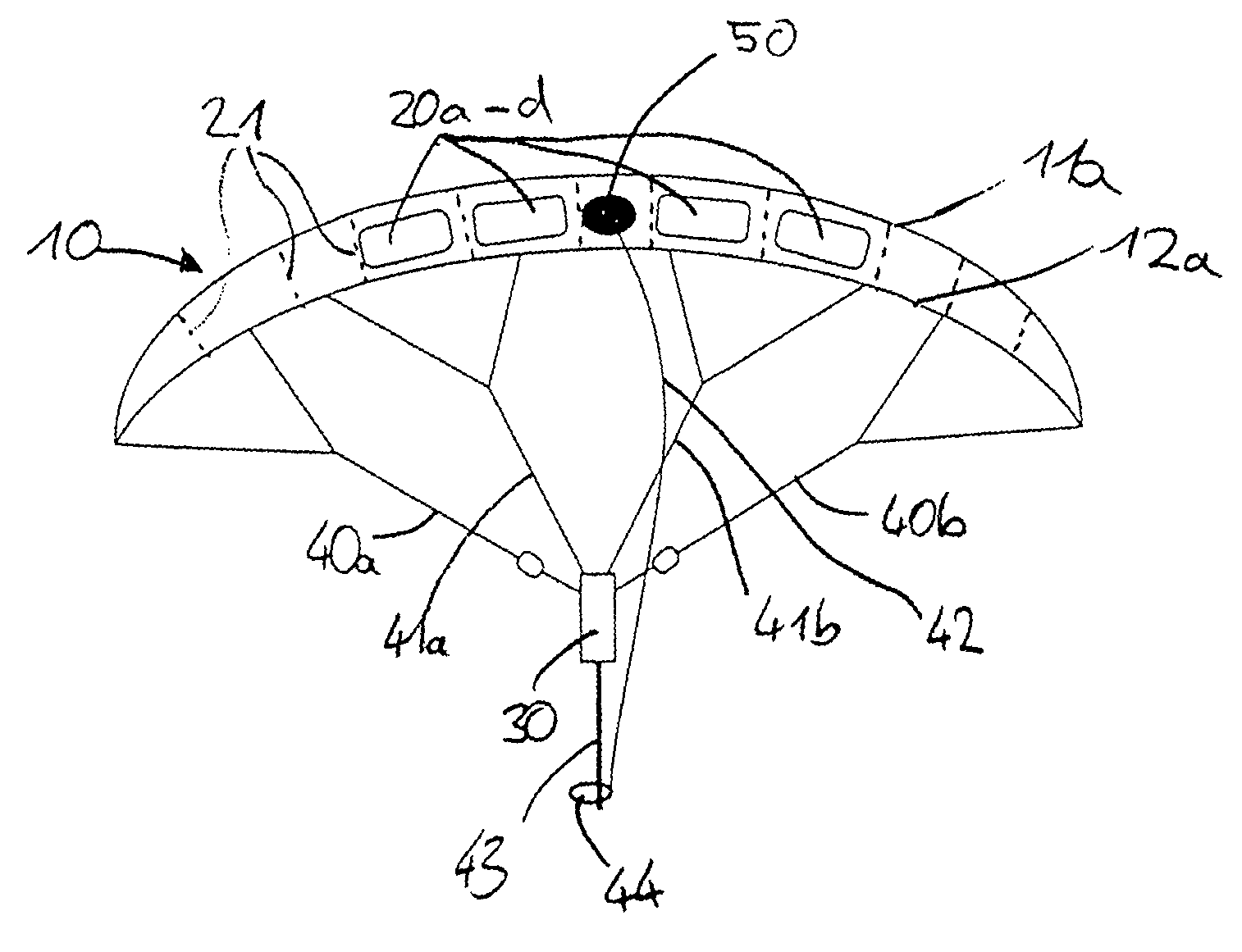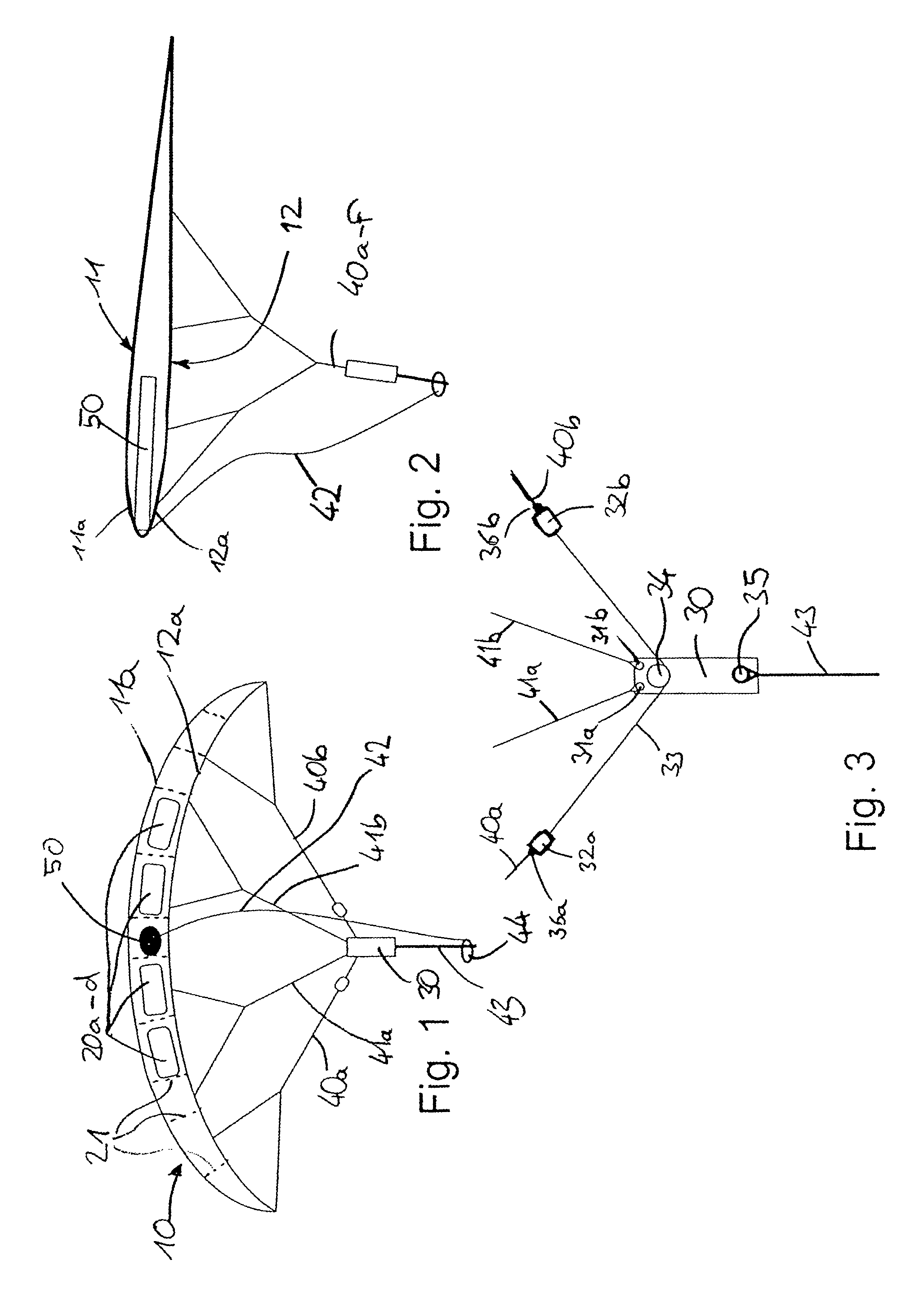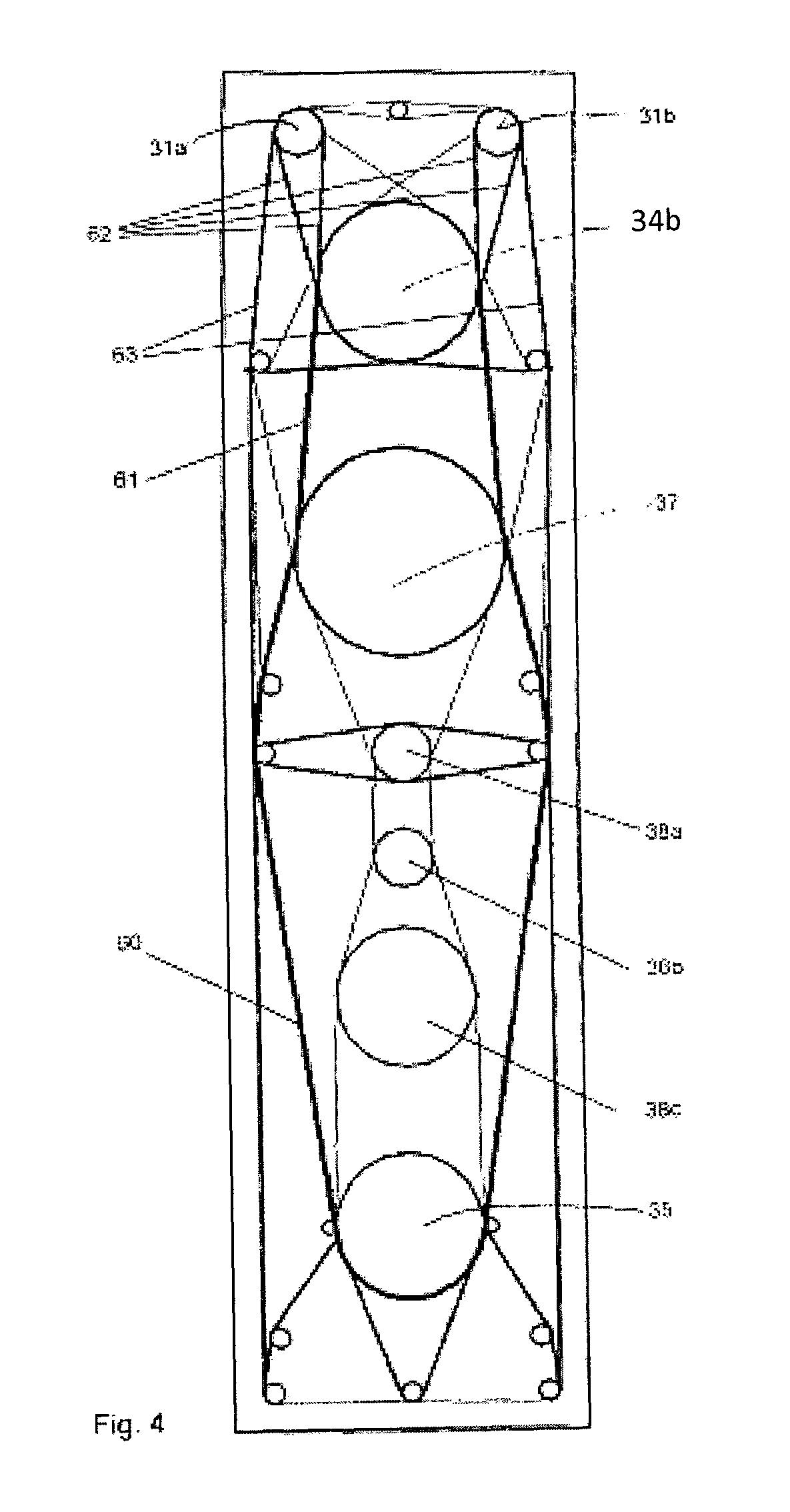Steering unit for free flying, confined wing element
a free-flying, confined technology, applied in marine propulsion, special-purpose vessels, vessel construction, etc., can solve the problems of increasing the weight of the attachment means, controlling the flight and inefficient connection of the wing element to the ground attachment point via more than one tractive lin
- Summary
- Abstract
- Description
- Claims
- Application Information
AI Technical Summary
Benefits of technology
Problems solved by technology
Method used
Image
Examples
Embodiment Construction
[0055]Referring to FIGS. 1 and 2 an aerodynamic wing element according to the invention may be shaped like a kite 10 comprising an upper layer 11 and a lower layer 12. In the frontal view according to FIG. 1 four openings 20a-d are visible in the leading edge 11a, 12a. These openings ventilate the inner space between the upper and lower layer 11, 12. The openings are arranged beside the horizontal longitudinal axis of the kite. In the lateral area between the leading edges 11a, 12a no openings are present.
[0056]The upper and lower layer are connected via a plurality of ribs 21 shown in dashed lines in FIG. 1. The assembly of upper layer, lower layer and the plurality of ribs provides a flexible wing element. This wing element is attached to a steering unit 30 via a plurality of tractive lines. Basically, starting from a large number of lines attached to the wing element these lines are merged to a reduced number of lines in a plurality of merging steps (for the sake of clarity only ...
PUM
 Login to View More
Login to View More Abstract
Description
Claims
Application Information
 Login to View More
Login to View More - R&D
- Intellectual Property
- Life Sciences
- Materials
- Tech Scout
- Unparalleled Data Quality
- Higher Quality Content
- 60% Fewer Hallucinations
Browse by: Latest US Patents, China's latest patents, Technical Efficacy Thesaurus, Application Domain, Technology Topic, Popular Technical Reports.
© 2025 PatSnap. All rights reserved.Legal|Privacy policy|Modern Slavery Act Transparency Statement|Sitemap|About US| Contact US: help@patsnap.com



